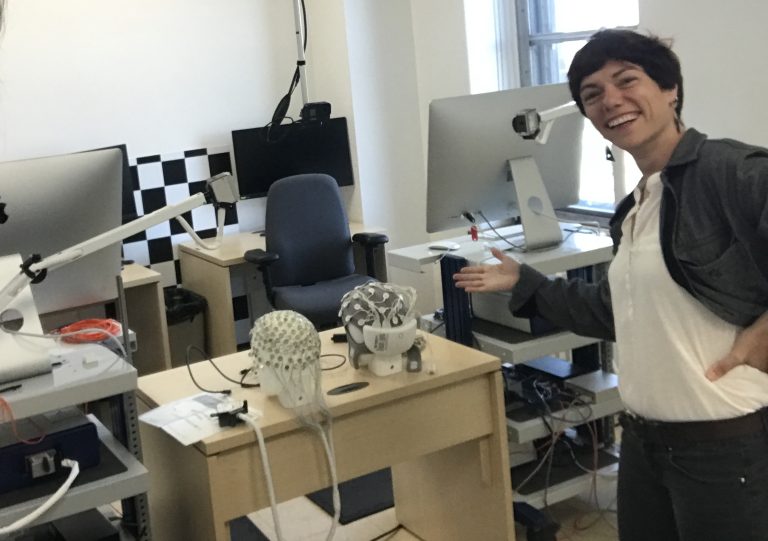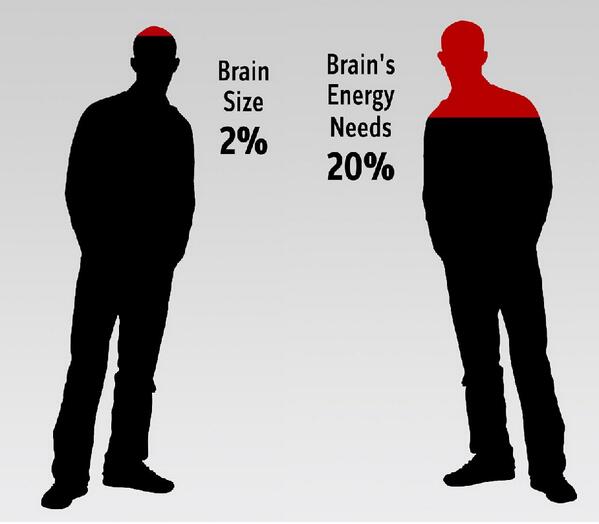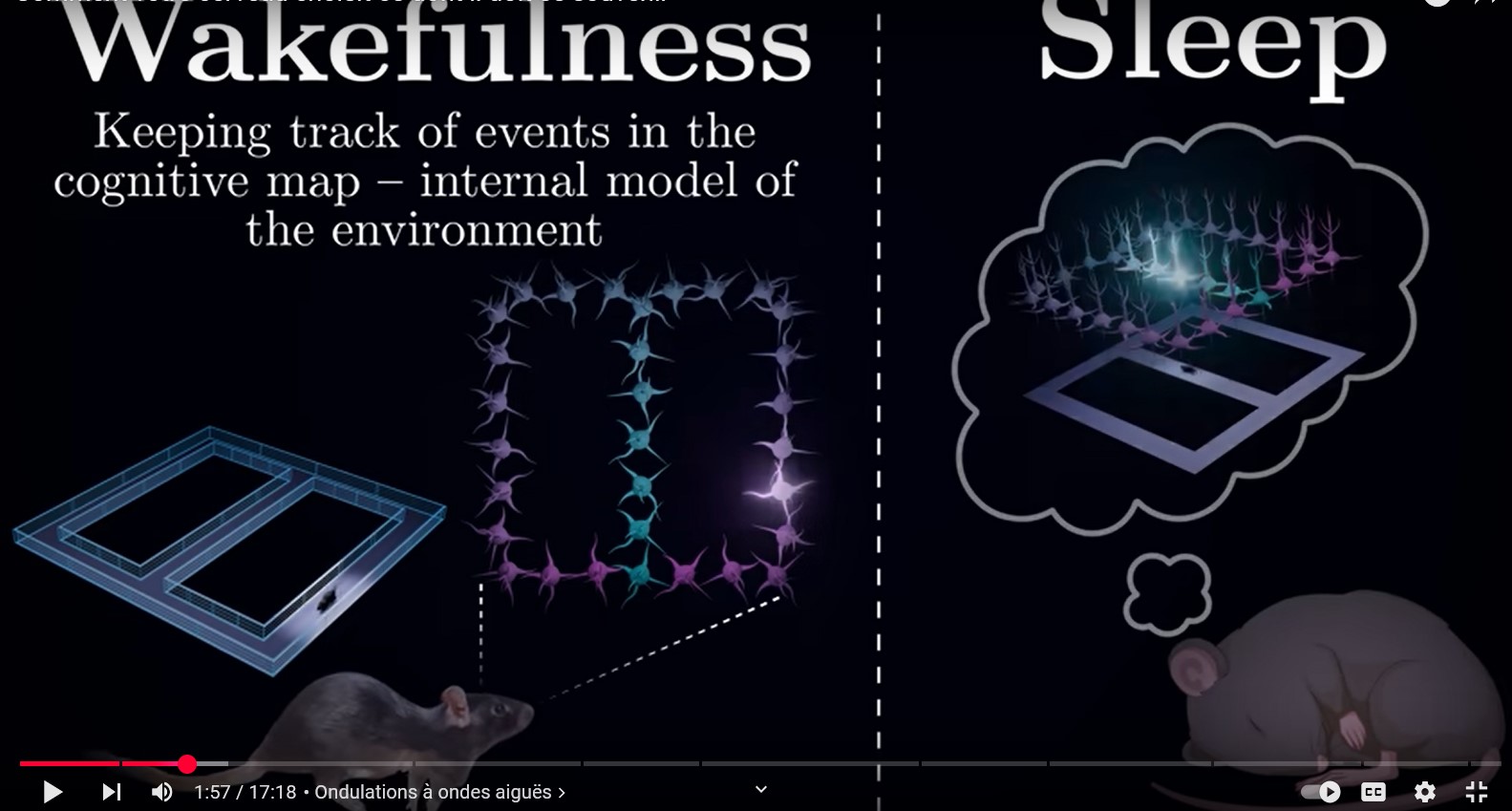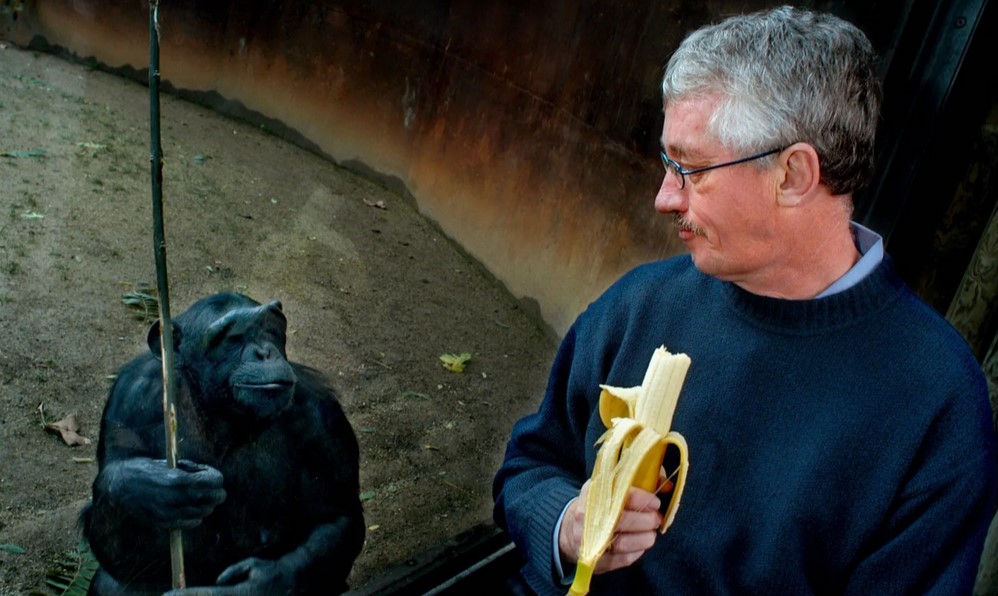Friday, 31 October 2025
A visit to a hyperscanning laboratory

Last September, thanks to doctoral student Anne Monnier, I had the chance to visit the laboratory where she is doing her research, directed by Guillaume Dumas at the CHU Ste-Justine research centre in Montreal. I have written about Dumas in an earlier post in this blog, in which I described the hyperscanning technique being used for several research projects at this “precision psychiatry and social physiology” laboratory.
As I explained in that post, hyperscanning consists in observing in real time what is going on between the brains of two people who are interacting socially. Often, the methods used in hyperscanning, such as functional magnetic resonance imaging, or, even better, electroencephalography, which affords greater temporal resolution, show correlations between the activities of certain parts of the two individuals’ brains. In other words, they show synchronization of neural activity–bursts of activity at the same frequency and in phase with each other, and not just among various regions of a single brain, as in virtually any cognitive task, but rather between two different brains.
As you can see in the above photo, in the experimental set-up for hyperscanning, there are two copies of every piece of equipment, so that researchers can simultaneously record the activity of two brains that are interacting, as is the case in the vast majority of social interactions between humans. In this way, for some 20 years now, researchers have been studying how an individual’s brain activity is influenced by their interactions with other people and how that individual’s behavioural and verbal reactions influence those other people’s brains in turn. One classic experimental protocol would be to have two individuals engage in a simple task of imitation, trading the roles of initiator and imitator over the course of the experiment. This protocol lets researchers explore what is going on in the brains of two individuals, whether they are neuronormal or somewhere on the autism spectrum, as is one of the populations studied in the Dumas lab.
To find out more about the ABCs of hyperscanning, you can read this article suggested to me by Anne Monnier, whom I want to thank here for all her help. Published in 2020, it presents the methods used and results obtained over the past 20 years of hyperscanning research.
From Thought to Language, Mental Disorders | Comments Closed
Monday, 19 May 2025
Why does your brain consume so much energy?
 Your brain accounts for only about 2% of your body weight, but 20 to 25% of all the oxygen and glucose that your body consumes. Why this vast disparity? Until about 20 years ago, people tended to think of the brain as an organ that waited passively for stimuli and then reacted to them. But more recent neuroscientific research paints a very different picture of the brain, as an organ constantly engaged in intrinsic, spontaneous activity. Metaphorically, people used to imagine the brain as a calm, flat body of water, onto which a drop of rain occasionally fell and created a few ripples. Now scientists have shown us that the brain is a place where it is always raining, so that when one drop of rain falls, the small disturbance that it creates merges into something larger that is already highly active.
Your brain accounts for only about 2% of your body weight, but 20 to 25% of all the oxygen and glucose that your body consumes. Why this vast disparity? Until about 20 years ago, people tended to think of the brain as an organ that waited passively for stimuli and then reacted to them. But more recent neuroscientific research paints a very different picture of the brain, as an organ constantly engaged in intrinsic, spontaneous activity. Metaphorically, people used to imagine the brain as a calm, flat body of water, onto which a drop of rain occasionally fell and created a few ripples. Now scientists have shown us that the brain is a place where it is always raining, so that when one drop of rain falls, the small disturbance that it creates merges into something larger that is already highly active.
This major paradigm shift originated in the observation that the brain generates neural activity patterns spontaneously, regardless of what is happening in the individual’s environment. In your earliest stages of development, you may see no apparent connection between these patterns and the world around you. But they become more meaningful as you grow, acquire experience and begin to see how your actions in certain situations affect the world around you.
From the Simple to the Complex | Comments Closed
Wednesday, 23 April 2025
Our two ways of thinking and the inhibition of the frontal cortex

The human brain is often described as having two main ways of thinking: one of them fast, automatic and unconscious, the other slower, more flexible and requiring conscious control. Each of them has its own benefits and drawbacks. The first—let’s call it “System 1”—is based on the sum of the habits, stereotypes and received ideas that we have acquired since childhood. System 1 doesn’t provide us with any ready-made solutions, but instead sends us down paths to possible or likely ones. In contrast, System 2, with its logical, rational thinking, is slower and more careful. It proceeds by deduction, inference and comparison. System 2 is what lets us see past our conditioning and beyond appearances. (more…)
From Thought to Language | Comments Closed
Monday, 17 March 2025
Frans de Waal’s legacy on “human nature”
I have just learned the sad news that the great Dutch primatologist Frans de Waal died in March 2024, at the age of 75. De Waal was both a fine researcher and a peerless communicator about his discipline to the general public.
As the United States continues its descent into techno-fascist oligarchy, many people are now rightly wondering what “human nature” is all about. De Waal did much to show that contrary to the theory of philosophers such as Thomas Hobbes, that human beings are fundamentally selfish and human morality is just a thin cultural veneer, human nature actually has deep evolutionary roots in empathy and reciprocity that are abundantly demonstrated by the behaviour of non-human primates and even of other mammals. The quote from de Waal that I was looking for this morning reveals that “human nature” is more complex and nuanced. We humans, with our brains three times the size of those of the chimpanzees and bonobos who are our closest living cousins, can be both more aggressive than the former (who sometimes gang up to kill isolated members of other groups) and more altruistic than the latter (who are well known for using sex to settle conflicts). (more…)
Uncategorized | Comments Closed
Monday, 24 February 2025
Truly amazing videos about the hippocampus

This week I want to encourage you to watch a video entitled “How Your Brain Chooses What To Remember”, at https://www.youtube.com/watch?v=ceFFEmkxTLg. This video is one of many posted on the YouTube channel of computational neuroscientist Arsem Kirsanov. Kirsanov worked in the laboratory of neurologist Gyorgy Buzsaki , and Kirsanov’s videos about the hippocampus are truly amazing—in particular the one that I just mentioned. Not only does it present the content and methodology of a recent scientific article that is fascinating in itself, but it does so using a brilliant instructional approach with outstanding visuals. (more…)
Memory and the Brain | Comments Closed








